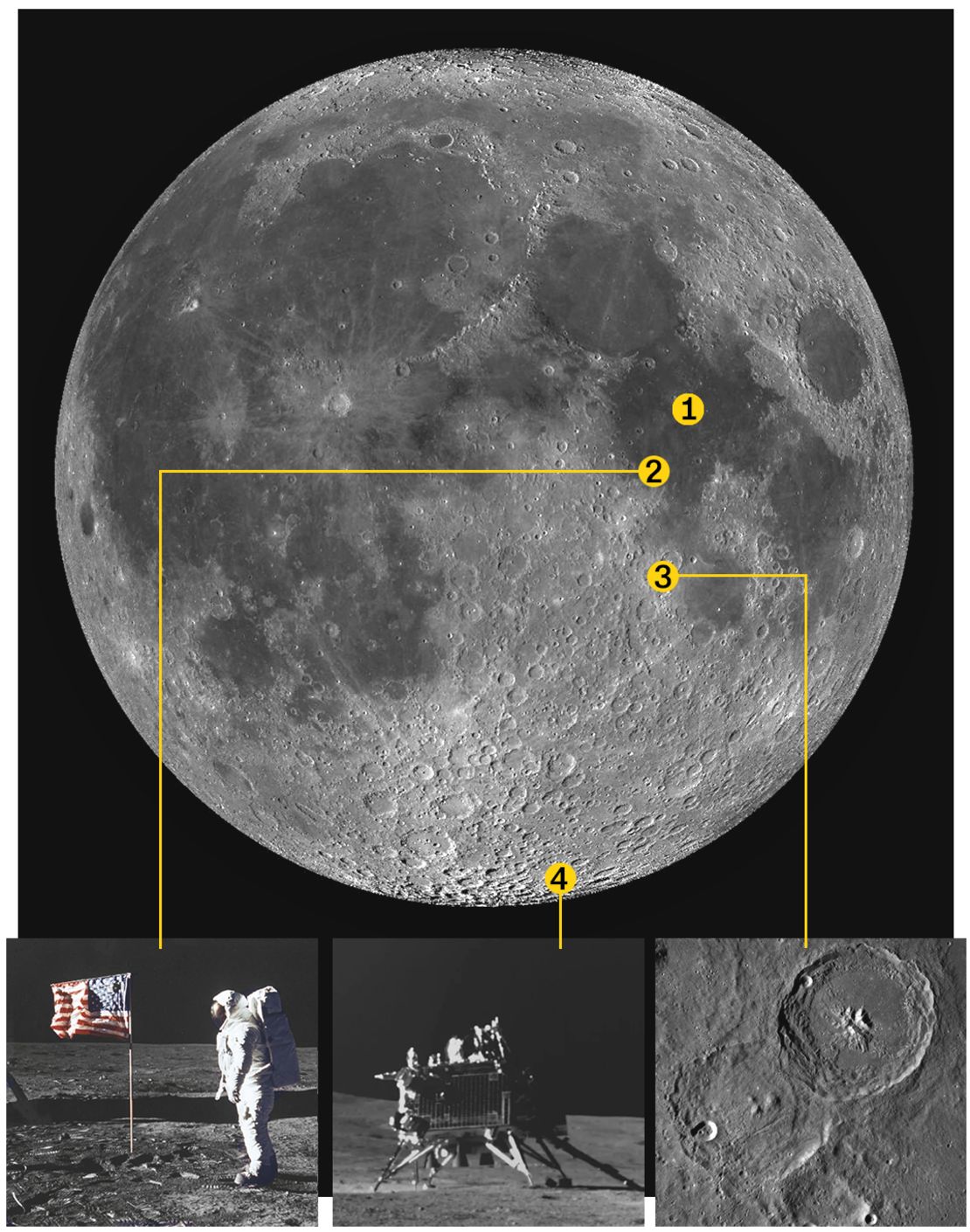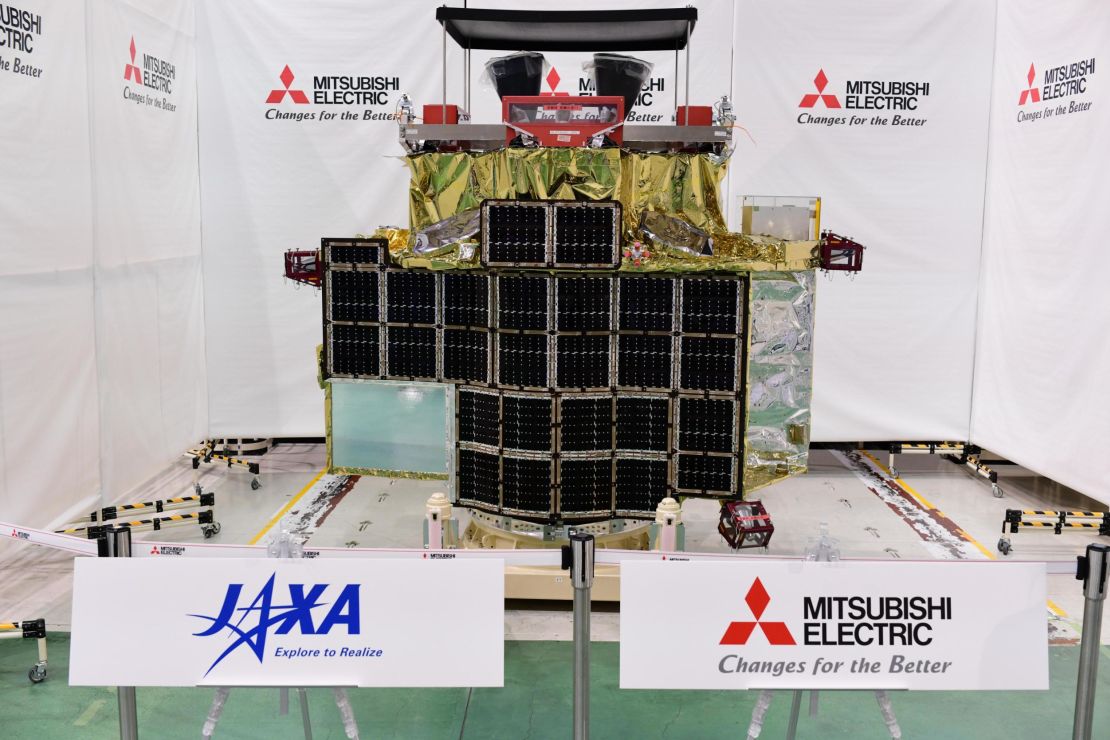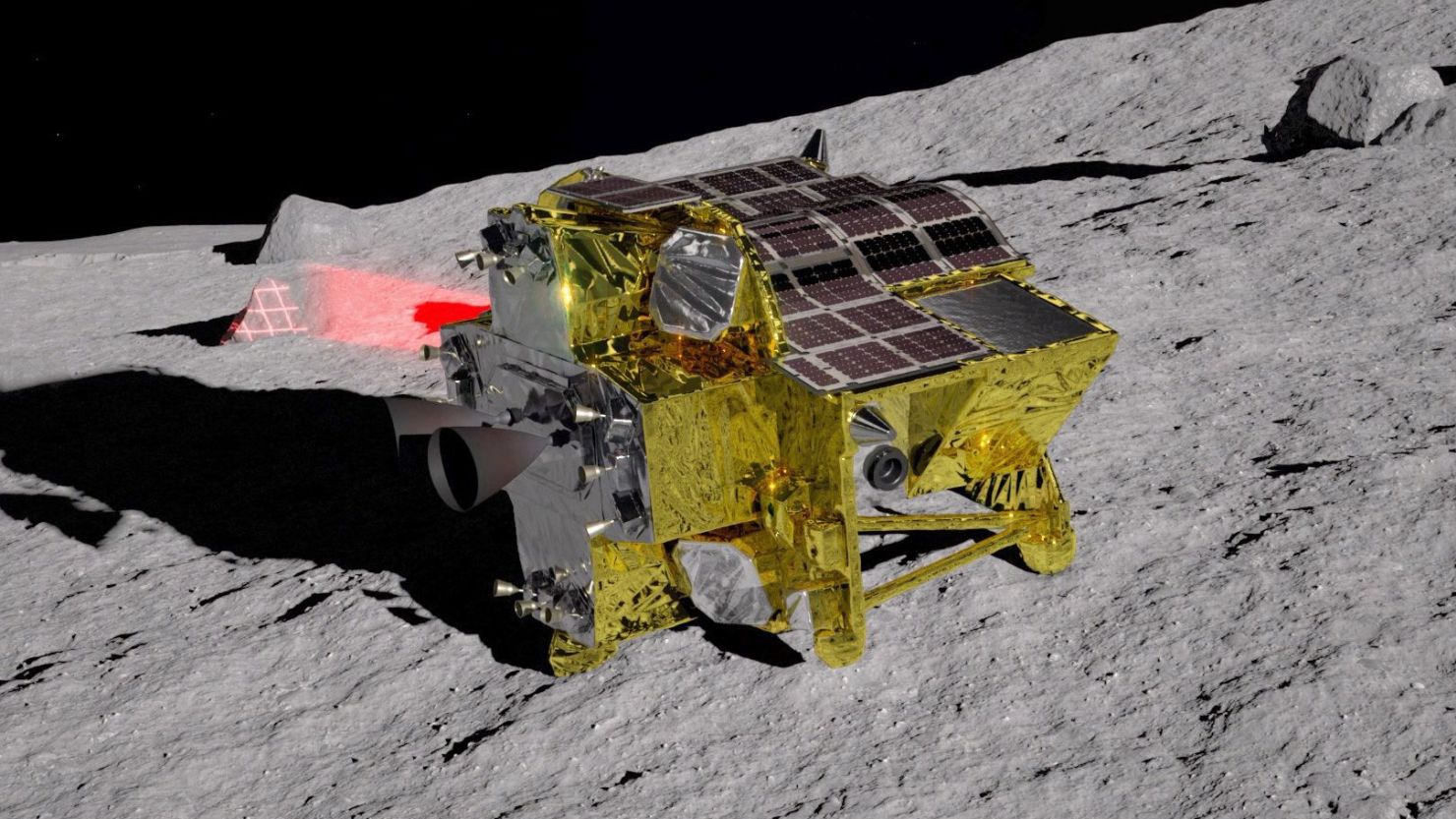Sign up for CNN’s Wonder Theory science newsletter. Explore the universe with news on fascinating discoveries, scientific advancements and more.
Japan’s “Moon Sniper” robotic explorer landed on the lunar surface, but the mission may end prematurely since the spacecraft’s solar cell is not generating electricity, the Japan Aerospace Exploration Agency said. The agency said it is currently receiving a signal from the lander, which is communicating as expected.
The uncrewed Smart Lander for Investigating Moon, or SLIM, mission landed just after 10:20 a.m. ET Friday (12:20 a.m. Saturday Japan Standard Time), according to telemetry data shared on JAXA’s live broadcast.
Currently, the lander is operating on limited battery power, only expected to last several hours, and the JAXA team is analyzing the data to determine the cause of the solar cell issue and the next steps for the lander. It’s possible that the solar cell issue is due to the fact that the spacecraft is not pointing in the intended direction, JAXA officials said.
There is hope that as the solar angle changes on the moon, the solar cell may be able to charge again, but that may take some time and will depend on whether SLIM can survive the frigid lunar night, the team shared during a news conference.
The agency believes the mission has met the criteria to declare it a “minimum success,” because the spacecraft achieved a precise and soft lunar landing using optical navigation. The touchdown makes Japan the third country this century — and the fifth ever — to land on the moon.
When asked to score the landing operation for SLIM, JAXA director general Dr. Hitoshi Kuninaka gave it a “60 out of 100,” while also mentioning that he is known for making “harsh comments.”
The team is also working to gather all of the scientific data obtained by the lander.
The lander was able to release its two lunar rovers, LEV-1 and LEV-2. The LEV-1 rover moves using a hopping mechanism and is equipped with wide-angle visible light cameras, scientific equipment and antennas that allow it to communicate with Earth.
And LEV-2, also outfitted with cameras, can change shape to move across the lunar surface.
The team is receiving a signal from LEV-1 and will see whether its cameras were able to capture any images. JAXA officials said they will not definitively confirm the status of LEV-2 until more data is received.
The small-scale SLIM robotic explorer, which launched in September, goes by the nickname “Moon Sniper” because it carried new precision technology to demonstrate a “pinpoint” landing.
Previous lunar missions have been able to target and reach specific zones that spanned many kilometers, but the SLIM lander targeted a landing site that stretches just 100 meters (328 feet) across. The lander’s “smart eyes” — an image-matching-based navigation technology — rapidly photographed the sloped lunar surface on approach and autonomously made adjustments as the spacecraft descended toward touchdown.
The JAXA team is still working to determine the accuracy of SLIM’s landing, which could take up to a month.
Moon Sniper’s journey
The Moon Sniper targeted a landing site near the small Shioli crater within a lunar plain called the Sea of Nectar that was created by ancient volcanic activity and lies just south of the Sea of Tranquility, where Apollo 11 landed in 1969. The lander is designed to briefly study rocks at the site that could reveal insights into the moon’s origin.

When meteorites and other objects strike the moon, they create craters as well as rocky debris that litters the surface. These rocks intrigue scientists because studying them is effectively like peering inside the moon itself. Minerals and other aspects of the rocks’ composition can potentially shed more light on how the moon formed.
Landing near the sloped, rock-strewn areas around craters is a hazardous process that most missions usually avoid, but JAXA believes its lander has the technology to touch down safely on rocky terrain.
New space race
Multiple space agencies and countries have attempted moon landing missions over the past year, leading to a historic first as well as failures.
India became the fourth country — after the United States, the former Soviet Union and China — to execute a controlled landing on the moon when its Chandrayaan-3 mission arrived near the lunar south pole in August.

Meanwhile, Japanese company Ispace’s Hakuto-R lunar lander fell 3 miles (4.8 kilometers) before crashing into the moon during a landing attempt in April. Russia’s Luna-25 also crash-landed in August during the country’s first attempt to return to the moon since the Soviet Union’s fall. Astrobotic Technology’s Peregrine spacecraft — the first US lunar lander to launch in five decades — met a fiery end Thursday after a critical fuel leak made safely landing on the moon out of the question.
Part of the motivation behind the new lunar space race is a desire to access water trapped as ice in permanently shadowed regions at the lunar south pole. It could be used for drinking water or fuel as humanity pushes the bounds of space exploration in the future. This region is riddled with craters and strewn with rocks, leading to narrow landing sites.
The lightweight SLIM lander might be an effective design that could not only land in small areas of interest on the moon but also on planets such as Mars, according to JAXA.







